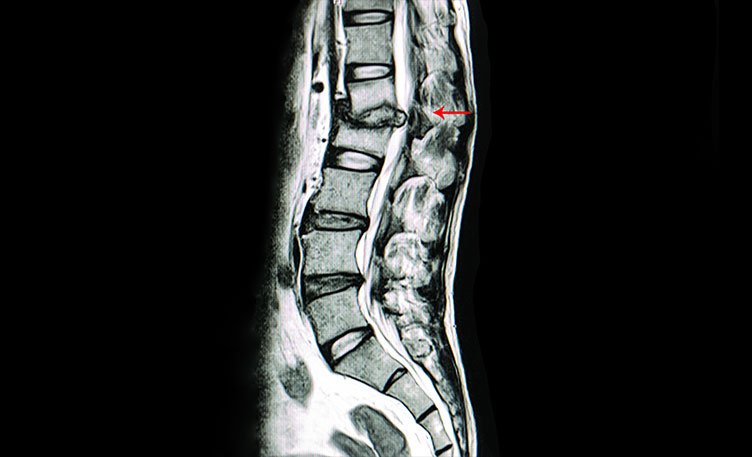Lajpat Nagar Metro Station, Block M, New Delhi, 110024
|096506 82102

Tuberculosis Spine Treatment : An Overview
Tuberculosis spine, also known as spinal tuberculosis or Pott's disease,
is a condition
caused by the bacteria Mycobacterium tuberculosis affecting the spinal bones. Treatment
typically involves a combination of anti-tuberculosis medications and, in some cases,
surgical intervention.
Surgical procedures may include decompression of the spinal cord,
stabilization of the
affected vertebrae, and removal of infected tissue. These procedures aim to alleviate
symptoms, prevent neurological complications, and promote spinal healing.
When Do You Need Tuberculosis Spine Treatment?
Our primary treatment modalities include pain medication and physiotherapy following the diagnosis of your condition. Our spine specialists may recommend additional treatments if these initial approaches fail to deliver the desired outcomes. Early intervention is recommended for the following symptoms:
- 1. Foot drop or leg weakness
- 2. Bowel or bladder dysfunction
- 3. Increasing numbness
- 4. Debilitating pain hampering routine activities
- 5.Progressive and recurrent pain after initial improvement
- 6.Lack of improvement or progression of symptoms despite conservative therapy.
→Pre-Surgical Care For Tuberculosis Spine
Treatment
→What to Expect During Tuberculosis Spine
Treatment
→Guidelines For Post-Tuberculosis Spine
Treatment Care
Although tuberculosis spine treatment requires a comprehensive approach, including medication and sometimes surgery, certain precautions must be taken before undergoing any surgical intervention.
- Consult your doctor for an overall health checkup and discuss your tuberculosis treatment plan.
- Inform your doctor about any medications you are currently taking, especially those related to tuberculosis.
- Your specialist will review your condition and discuss the details of the treatment plan, which may include medications, surgery, or both.
- Follow any dietary restrictions or fasting instructions provided by your healthcare team prior to surgery.
- You will receive general anesthesia to ensure a pain-free procedure.
- The duration of the procedure varies depending on the complexity of the case, but it typically lasts several hours.
- After the procedure, you will be monitored in the recovery room until you are fully awake.
- Your healthcare team will provide pain management medications as needed to ensure your comfort.
- Physical therapy may be initiated shortly after the procedure to promote mobility and prevent complications.
- Any medical devices or catheters placed during the procedure will be removed once you are stable.
- You may experience some discomfort or numbness at the surgical site, but this should improve with time.
- Your length of hospital stay will depend on your recovery progress, but most patients can expect to return home within a few days.
- Your healthcare team will provide instructions for wound care and medication management upon discharge.
- Follow-up appointments will be scheduled to monitor your progress and adjust your treatment plan as needed.
- Make sure your home environment is safe and comfortable for your recovery, with necessary supplies and support readily available.
- Avoid strenuous activities and heavy lifting until cleared by your healthcare provider.
- Arrange for assistance with daily tasks and personal care during the initial stages of your recovery.
Understanding Tuberculosis Spine
Tuberculosis of
the spine can cause symptoms such as:
- Back pain that worsens over time
- Stiffness and limited movement of the spine
- Weakness, numbness, or tingling in the limbs
- Loss of appetite and weight loss
- Fever and night sweats
- Difficulty in walking or standing for long periods
Tuberculosis of the spine is typically diagnosed through a combination
of:
- Medical history and physical examination
- Imaging tests such as X-rays, CT scans, or MRI scans
- Biopsy of the affected tissue
- Testing for tuberculosis infection, such as Mantoux test or TB blood test
Treatment for
tuberculosis spine may involve a combination of:
- Antibiotic therapy to treat the tuberculosis infection
- Anti-inflammatory medication to reduce pain and inflammation
- Bed rest and immobilization with a brace
- Surgery to remove damaged tissue or stabilize the spine
- Physical therapy to improve mobility and strength
